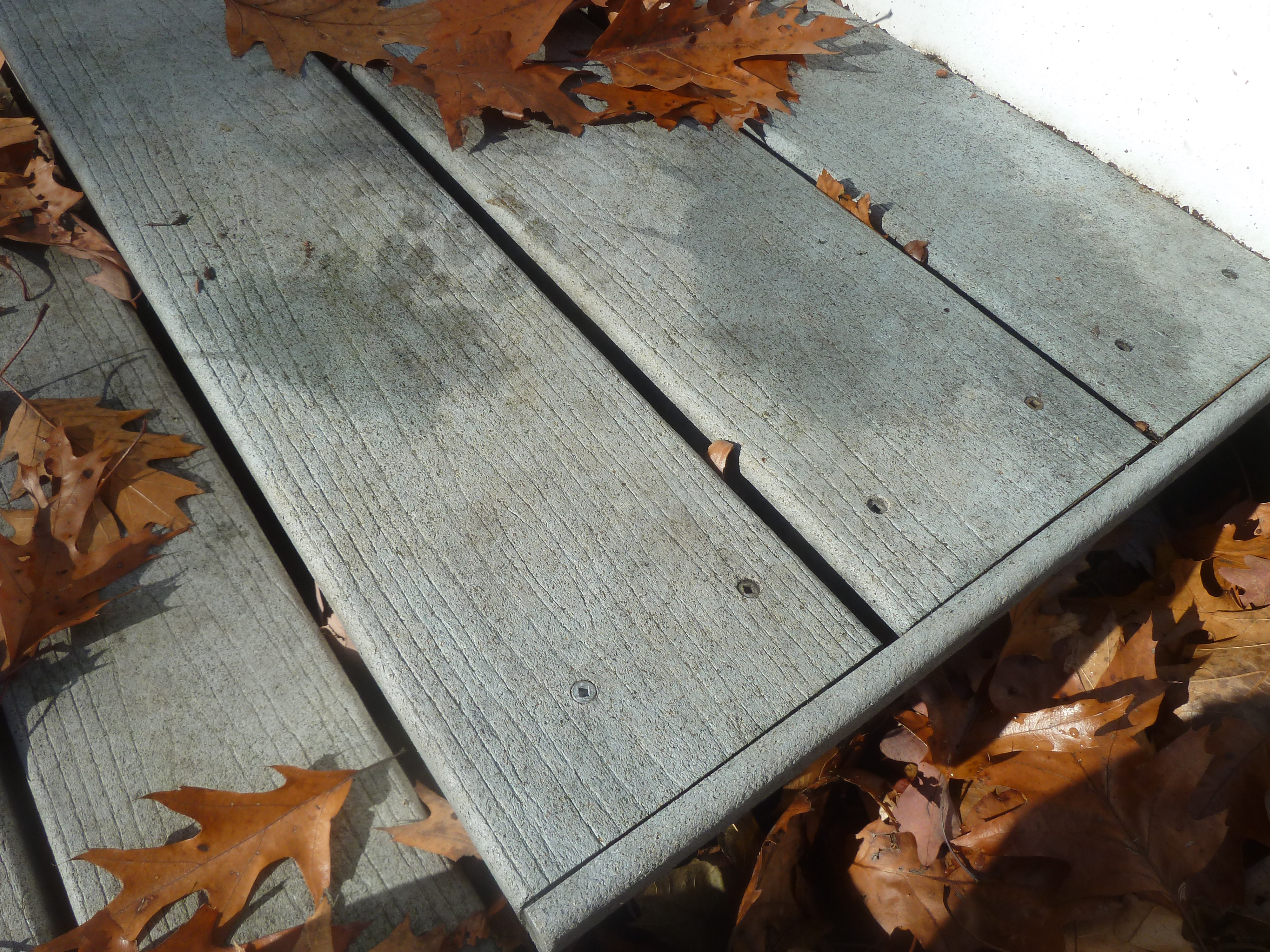Are you considering rebuilding your deck the composite decking? Here are some things to consider before you commit to this relatively new material.
I recently was on a home inspection for a home that was approximately 10 years old. During the inspection I was looking at 2 decks that were part of the home. These decks were constructed of a composite wood material that has become popularized as a maintenance free alternative to wood. We had come across several issues during the inspection of the deck. One issue of note was that the boards where cracking and splitting along the edges. I attribute this to spacing. Like most decking wood or composite there needs to be some space for expansion and contraction. The other issue that we noted was the deterioration of the wood joists under the composite decking. This was due to the drying qualities of composite decking. Wood decking will absorb moisture and release to the air around it. Composite decking does not absorb water. Moisture that gets trapped under the decking and on top of the wood joists would tend to stay there and keep the joist from drying properly. Wood that is not allowed to dry properly will be more susceptible to rot and decay.
Here are some other common issues with composite decking.
Cost: Compared to traditional wood decking ($15/ sq. ft.), composite decking is considerably more expensive ($30-$36/ sq. ft.). This cost is for materials. The labor cost tends to be a bit higher due to additional steps that are required during installation. Composite decking requires the joist to be closer together then that of traditional wood. If the composite lumber is not properly supported it tends to bow and warp. Each board must be pre-drilled during the fastening process. These add to the cost of materials and additional labor times.
Scratching: Composite decking is made of a combination of wood and plastic. This combination is intended to reduce chance of rot and extend the life of the deck. T he material is not indestructible. The surface of the boards can be scratched rather easily. Composite decking cannot be resurfaced. I have read that you can use a heat gun and a wire brush, but I would not recommend this, you are more likely to further damage the material and cause melted and uneven areas.

Photo credit: Millennial1
Stains: One of the most common complaints about composite decking is mold. Decking that is in shaded area or areas that tend to get wet frequently have been shown to grow mold and stain the deck. This is not restricted to composite decking. Wood decking can grow mold, mildew and algae. For wood decking, the remedy for would is cleaning and resurfacing. Composite decking requires using special cleaning chemicals that will kill the mold and remove some of the finish. This will leave the decking more porous and susceptible to more mold growth.
 Color fade: Many of the composite decking companies have beautiful brochures with images of elaborate decks of different colors and looks, many of these companies will not show you the deck several years later when it is faded from contact with the sunlight. I know wood decking can fade too, but you can re-stain wood. There are some products out that claim to restore the composite decking to near new conditions, I cannot speak to the validity of the products, but it might be worth some research.
Color fade: Many of the composite decking companies have beautiful brochures with images of elaborate decks of different colors and looks, many of these companies will not show you the deck several years later when it is faded from contact with the sunlight. I know wood decking can fade too, but you can re-stain wood. There are some products out that claim to restore the composite decking to near new conditions, I cannot speak to the validity of the products, but it might be worth some research.
Hot surface: Probably the top complaint about composite decking is that it tends to get very hot in direct sunlight. Some surfaces that are exposed to direct sunlight all day may be to warm to walk on with bare feet. This will depend partly on the color of the material. Lighter colored decking will tend to reflex more of the heat, where darker colors will absorb the heat and tend to get hotter faster reaching higher temperatures.
I know that this is a very one sided article and I am not comparing composite decking to wood. I am merely talking about some of the issues that have been noted with the material. Composite decking is easier to maintain. It can be cleaned regularly with a garden hose and a soft bristled brush. Some manufacturers have had some success with the longevity of their products. With this type of material price is a contributing factor. In this instance the phrase, “You get what you pay for” may be very important. If you are considering using a composite decking material, do your research. Ask people that you know about the decks that they have installed and what issues they have come across. Ensure that your contractor has experience with composite materials. Make sure that you are comfortable with you decision before you commit to using this relatively new product.
More information on issues with composite decking can be found here. http://decks-fences.blogspot.com/search/label/Composite%20Decking
Prices may vary depending on the location and product availability.

